The design of Nayib Bukele’s crypto-city of the future is so 19th century

- Share via
I may be looking for ways to telecommute from Naples after watching Paolo Sorrentino’s “The Hand of God,” the cinematic tribute to youth and its loss. I’m Carolina A. Miranda, arts and urban design columnist at the Los Angeles Times, with the week’s essential arts news and experimental TikTok music.
The design of the future ... is the past
What if you gave a tech bro a whole country to govern? What if that tech bro wanted to build a city? What if that city wasn’t just any city but a “smart” city powered by a volcano? What if that city only accepted cryptocurrency as legal tender? What would that city look like? Who would design it?
If this all sounds like comic-book levels of far-fetched, you haven’t been following the hyperactive social media feeds of Salvadoran President Nayib Bukele. These ideas are real. And although the city isn’t likely to become real — financing remains a vaporous notion, and no date has been set for construction — the plan is at least posturing-on-social-media real.

On Monday, Bukele posted a string of tweets in which he showed off a model of his so-called Bitcoin City, a proposed urban development that would be sited at the base of the Conchagua volcano and laid out in the shape of a coin. (The volcano’s geothermal energy would presumably be used to power the mining for bitcoin, which El Salvador began accepting as legal tender last year.)
Standing next to Bukele at the presentation of the model was the Mexican architect who designed it: Fernando Romero, founder of the firm FR-EE.
Romero is perhaps best known for designing the Museo Soumaya for billionaire Carlos Slim in Mexico City. That structure, noted for its shimmering metal skin and corseted shape — my colleague art critic Christopher Knight once referred to it as the “bustier building” — is renowned for looking great on Instagram ... and that’s about it. Its internal layout does not do the art — or anything else, for that matter — any favors. (Mexican artist Yoshua Okón once parodied it as a highfalutin toilet.)
For the big presentation of Bitcoin City in El Salvador, Romero showed off a model, bathed in gold paint, that showed a radial city, which at its heart bore the bitcoin logo. The design came ready-made with monuments, as Bukele helpfully pointed out on Twitter. (One of those bears an uncanny resemblance to a proposed “temple,” previously designed by Romero, that was intended to be incinerated at Burning Man.)
Make the most of L.A.
Get our guide to events and happenings in the SoCal arts scene. In your inbox every Monday and Friday morning.
You may occasionally receive promotional content from the Los Angeles Times.
How the city might be zoned and how its myriad buildings might be used went unexplained by Bukele on Twitter.
But if the design seems familiar, it’s because radial plans — a city laid out as a series of concentric circles with separate functions — have a long history. The concept was popularized by British urban planner Ebenezer Howard in the late 19th century, who dubbed the sites “garden cities,” since their design would incorporate greenbelts and other elements that would provide its dwellers some proximity to nature. (The layout of U.S. cities such as Greenbelt, Md., Greenhills, Ohio, and Greendale, Wis., were inspired by the garden city movement.)
When Walt Disney proposed his unrealized original EPCOT, the Experimental Prototype Community of Tomorrow, a real-deal, fully functioning city that would purportedly reimagine the urbanism of the era, he turned to a radial plan inspired by garden city design. (The design of Epcot Center, a world’s fair-type theme park within Disney World, borrows the name but not the concept of the original Epcot.)
Which is why it’s rather comical to see Bukele, a populist with a penchant for dictator theatrics (have a look at his TikTok), turn to a design of the past — one that has lost favor for its separation of uses and its attendant sprawl — for his city of the future. Not to mention, there’s the oppressive top-down nature of the design, and the expansionist (colonialist?) idea that the city of the future needs to be built from scratch in some new pristine locale rather than emerging, organically, from the urban centers we already inhabit.
But, ultimately, what Bukele and Romero were presenting wasn’t so much a city as it was a bit of absurdist theater — one to prop up Bukele’s image as a high-tech innovator in a country plagued by real-world problems related to the drug trade and gangs. Moreover, in the very week he presented the model for Bitcoin City, the price of the currency took a nosedive.
The future, it seems, remains a long ways off.
On the stage
A recent study conducted by a group of arts organizations, L.A.’s Performing Arts and Reopening Survey, reveals that a post-pandemic comeback for the city’s theater scene has been fraught at best. “Both operating capacity and audience attendance are down to almost 50% of pre-pandemic levels, and ticket revenue is about one-third of what it was before COVID-19 struck,” reports The Times’ Jessica Gelt. “Expenses, in the form of COVID safety, as well as general inflation and rent increases, are also way up. Artistic directors say this is not sustainable.”
Compiling study findings, interviews with artistic directors around town and other data, Gelt has a look at the future of theater. The short of it: The road ahead will be very difficult.

In happier news, Gelt rounds up the 2022 Tony Award nominations: Michael R. Jackson’s Pulitzer Prize-winning musical, “A Strange Loop,” came out in the lead with 11 nominations. “The Lehman Trilogy” picked up eight nominations, including best play, and the revival musical category was led by “Company,” with nine Tony noms.
Times theater critic Charles McNulty parses the Tony tea leaves: “So we’re back to normal, right? Not exactly. Broadway remains an economic conundrum and a contested cultural question. It has been heartening to see the more diverse programming that has resulted from the racial and broader societal reckonings of the last few years. But the COVID-rankled marketplace — uncertain in the best of times — has only widened the gulf between hits and flops.”
McNulty also reviews Dave Harris’ “Tambo & Bones,” which opened at the Kirk Douglas Theatre on Sunday. The play tackles the legacy of minstrelsy in American entertainment over three different periods of time — past, present and future. “Metatheatrically restless, ‘Tambo & Bones’ takes a page out of Luigi Pirandello’s ‘Six Characters in Search of an Author,’” writes McNulty. “In rebellion against their playwright, Tambo and Bones drag the person responsible for placing them in this nutty minstrel show onto the stage and attack him.”

Plus: Patti LuPone is not having unmasked theater patrons.
Visual arts report
Currently occupying an L.A. warehouse is a small forest created by artist Glenn Kaino, along with a pack of collaborators. The forest isn’t real. It’s an immersive installation inspired by questions of climate justice, environmental activism and Indigenous land stewardship. My colleague Deborah Vankin got to wander through the space with the artist. “It’s about reimagining our relationship to nature and the planet,” Kaino tells her. “I hope people walk away with a small bit of understanding that there are truths that exist — ancient practices that we should start embracing and reinvigorating — and we need to figure out how to work, together, with nature.”
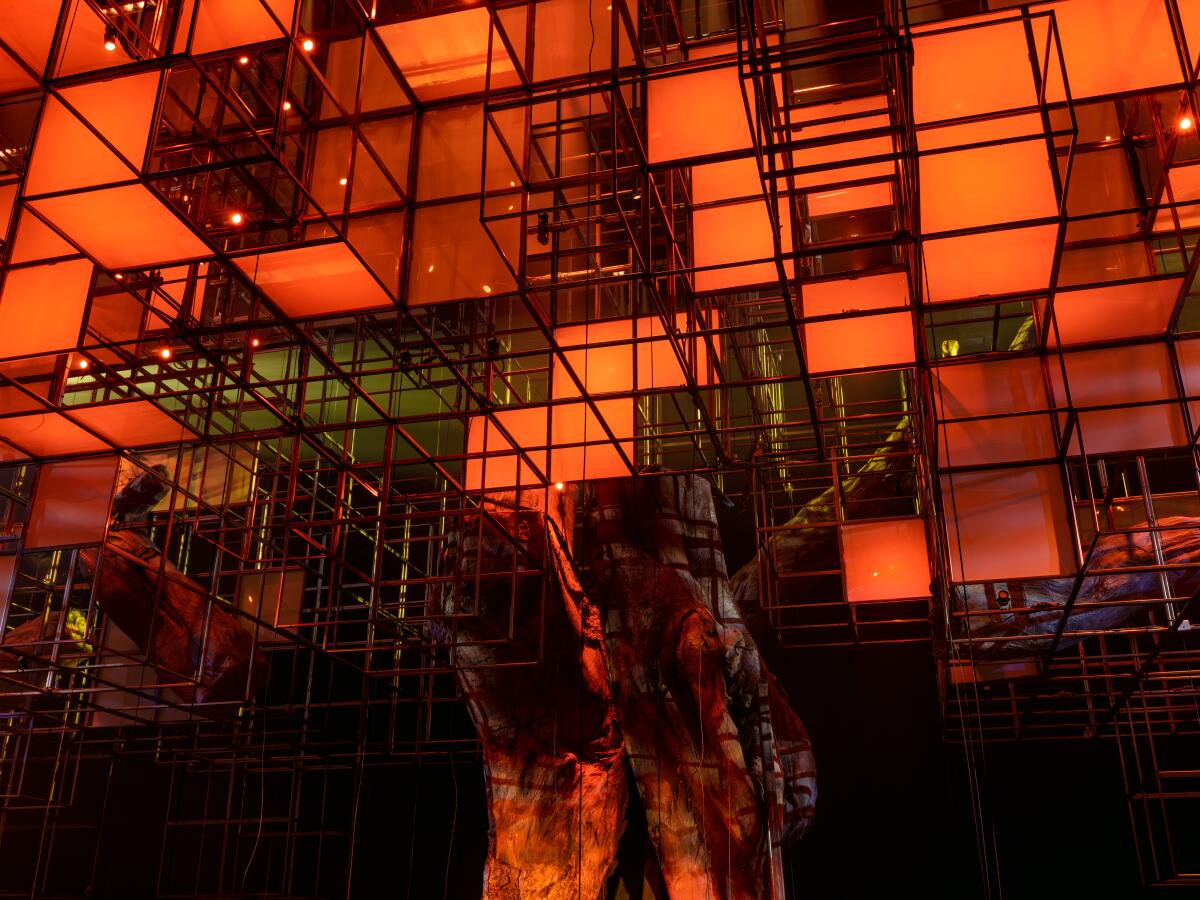
Times art critic Christopher Knight has been hitting the streets — and rounds up five art exhibitions that were delayed by the pandemic but are now in full swing. They include a show of paintings by Linda Besemer at the Kleefeld museum at Cal State Long Beach, canvases by Mario Moore and monumental collages by Deborah Roberts at the California African American Museum, woven pieces by Ferne Jacobs at the Craft in America Center and that fabulous show of Aboriginal textiles at UCLA’s Fowler Museum.
Of the Fowler’s show, he notes that many of these textiles can feature abstract patterns, simple survival objects and esoteric symbols, some only legible to the Aboriginal clan. “There’s something appealing about a secret sign language being manufactured into cloth used for commerce in clothing or furnishings,” writes Knight, “an International Clandestine style.”
Enjoying this newsletter? Consider subscribing to the Los Angeles Times
Your support helps us deliver the news that matters most. Become a subscriber.
I profile L.A. painter Eamon Ore-Giron, who has a solo exhibition at the MCA Denver and a video piece in a group show at VPAM at East L.A. College (made with fellow artist Julio Cesar Morales). The Denver show is focused on Ore-Giron’s painted works, including his “Infinite Regress” pieces, luminous canvases that synthesize geometric abstraction with Andean design. (The artist has Peruvian ancestry.) But the influences he draws from go way beyond art, because Ore-Giron is also a DJ, known in the world of music as DJ Lengua. “My work is about identity on some level,” he tells me. “It’s not the insecurity of identity but a reflection of identity. The reflection of this kaleidoscopic effect of Latin America.”
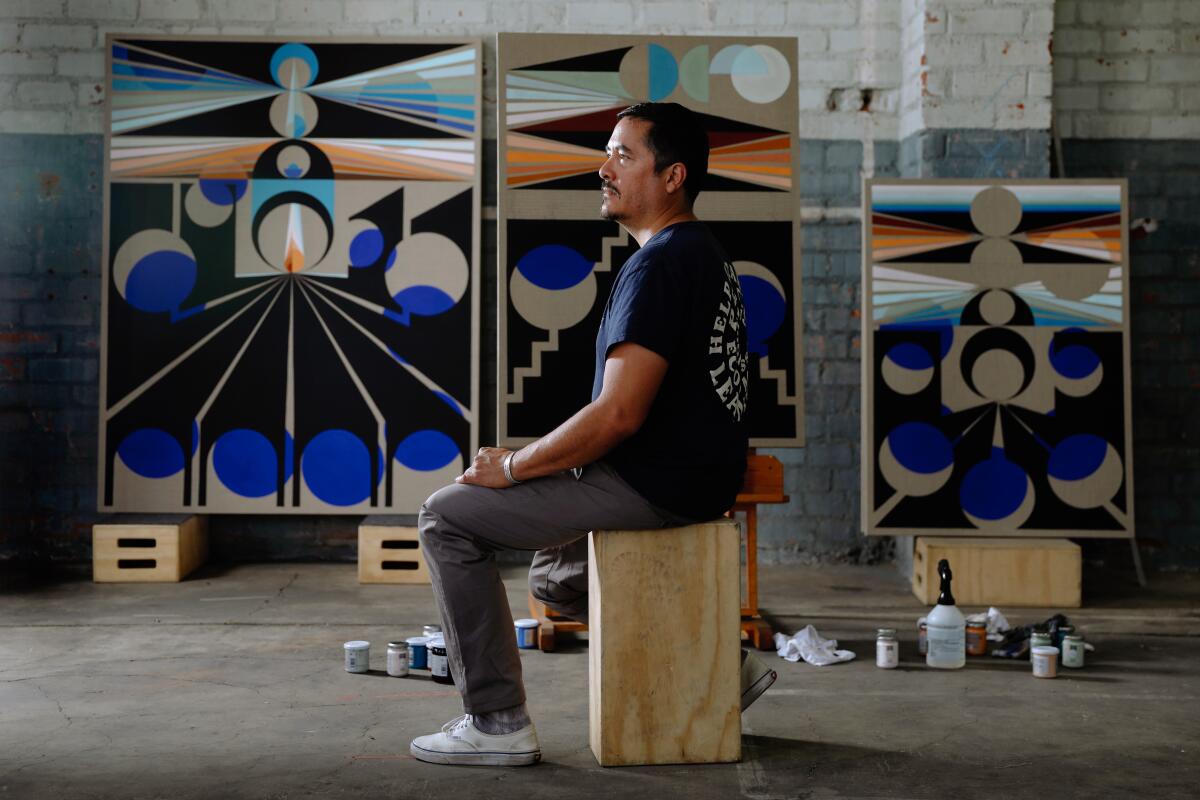
As I note in the story, Ore-Giron recently helped produce a compilation album for the Analog Africa label of cumbia rebajada, drawing from music from Mexico, Colombia and the Andes. The album is absolutely worth a purchase if you are into Latin American psychedelia. You can also find one of his highly enjoyable mixes on the Super Sonido blog.
Ukraine and culture
With the war in Ukraine on perpetual boil, Times classical music critic Mark Swed has a look at a series of concerts that directly and indirectly engage the culture of the region. This included a benefit concert for Ukraine put on by the Wende Museum and Jacaranda Music, a presentation by Ukrainian pianist Inna Faliks, as well as a pair of concerts at Disney Hall that seemed unrelated to Ukraine, “but the performances were indeed, indebted to the besieged country so much on our minds.” In an interesting historical piece, Swed traces the influences of Ukraine in classical music, including American music.
Times correspondent Laura King has a dispatch from Ukraine that looks at attempts to preserve cultural legacy there amid the rain of Russian missiles. As she writes: “Among countless homes and infrastructure targeted daily in Russian strikes, there is another category of loss — historic buildings, religious institutions, libraries and museums — avatars, all of them, of a nation’s sense of self.”
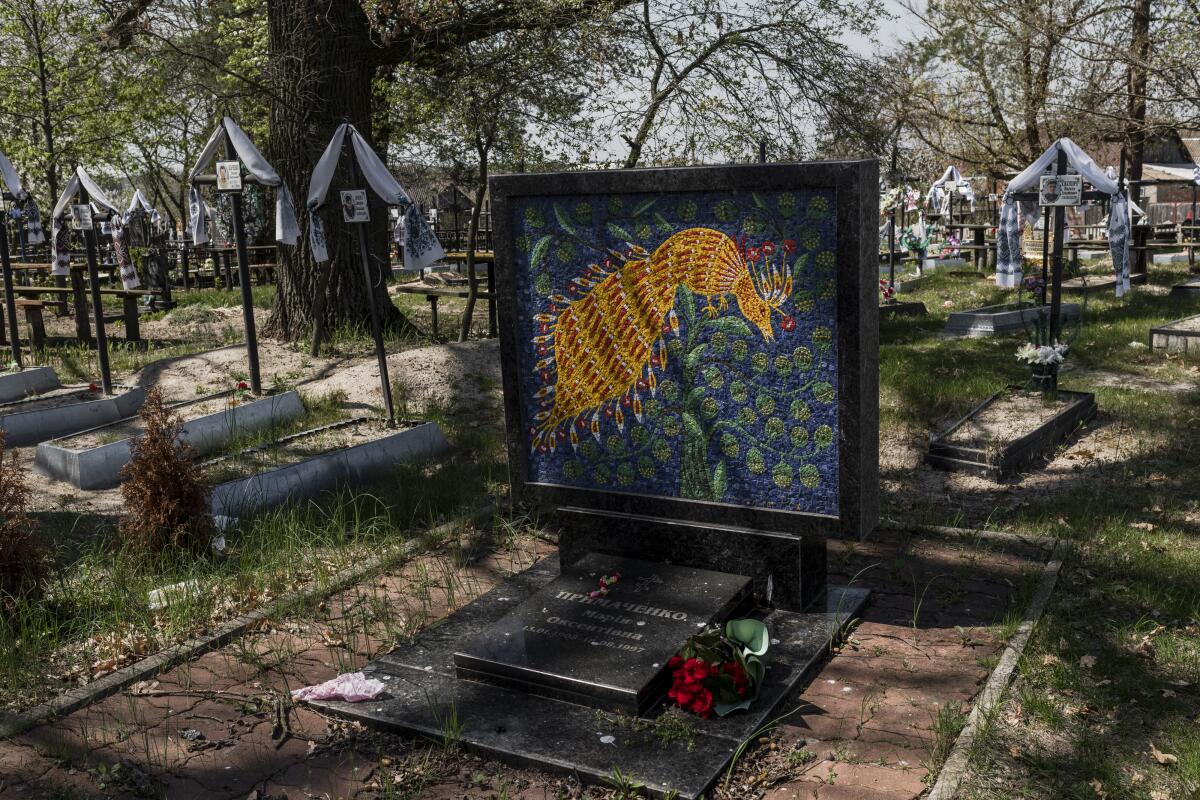
In related news: ARTnews is keeping a continually updated list of Ukraine’s most significant cultural sites damaged by Russia’s invasion.
Classical notes
Composer Raven Chacon was the winner of this year’s Pulitzer Prize in music for his “Voiceless Mass,” an ensemble piece performed without sung voices and written to highlight the sound of the Nichols & Simpson organ in Milwaukee’s Cathedral of St. John the Evangelist. Although that work was written specifically for that setting and that instrument, Swed notes that if Chacon were looking to restage the work, Southern California is home to a couple of the world’s largest church organs.
Chacon is best known in L.A. for his contributions to the 2020 opera “Sweet Land,” whose compositions he worked on in collaboration with Du Yun. I also spoke with Chacon in 2015, when he and fellow artists Kade Twist and Cristobal Martinez, as part of the collective Postcommodity, created a massive site-specific installation that bisected the U.S.-Mexico border.
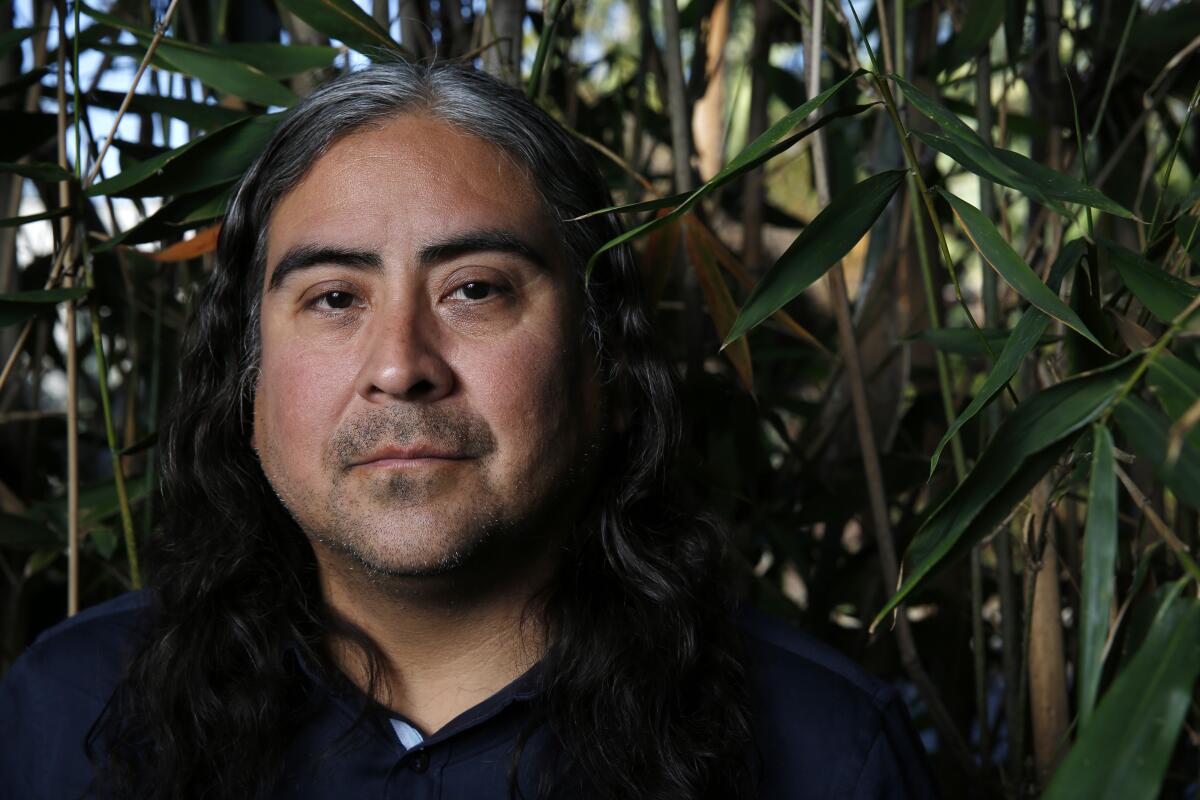
A series of concerts by the L.A. Phil brought together Stravinsky’s ballet cycle with classic Latin American ballet or film scores, including Alberto Ginastera’s suite of four dance from his 1941 ballet, “Estancia,” and Alex Nante’s “El Río de Luz.” L.A., you may recall, is the town where Stravinsky debuted his “Rite of Spring.” And, over time, writes Swed, Gustavo Dudamel’s direction of that iconic piece is less about show and more about drawing attention to “mood, atmosphere and, most meaningful of all, motivation.”
Just dance
Debbie Allen has a permanent home for her namesake dance academy thanks to the support of Shonda Rhimes. Her new 25,000-square-foot fine arts space in Mid-City, now called the Rhimes Performing Arts Center, was designed by Gensler. As The Times’ Melissa Hernandez reports, it features five dance studios, a 200-seat performance venue and classrooms. It also contains a studio theater and art gallery. Allen tells Hernandez, “I feel like what we have here — even though we’re 22 years old — this is a new beginning.”
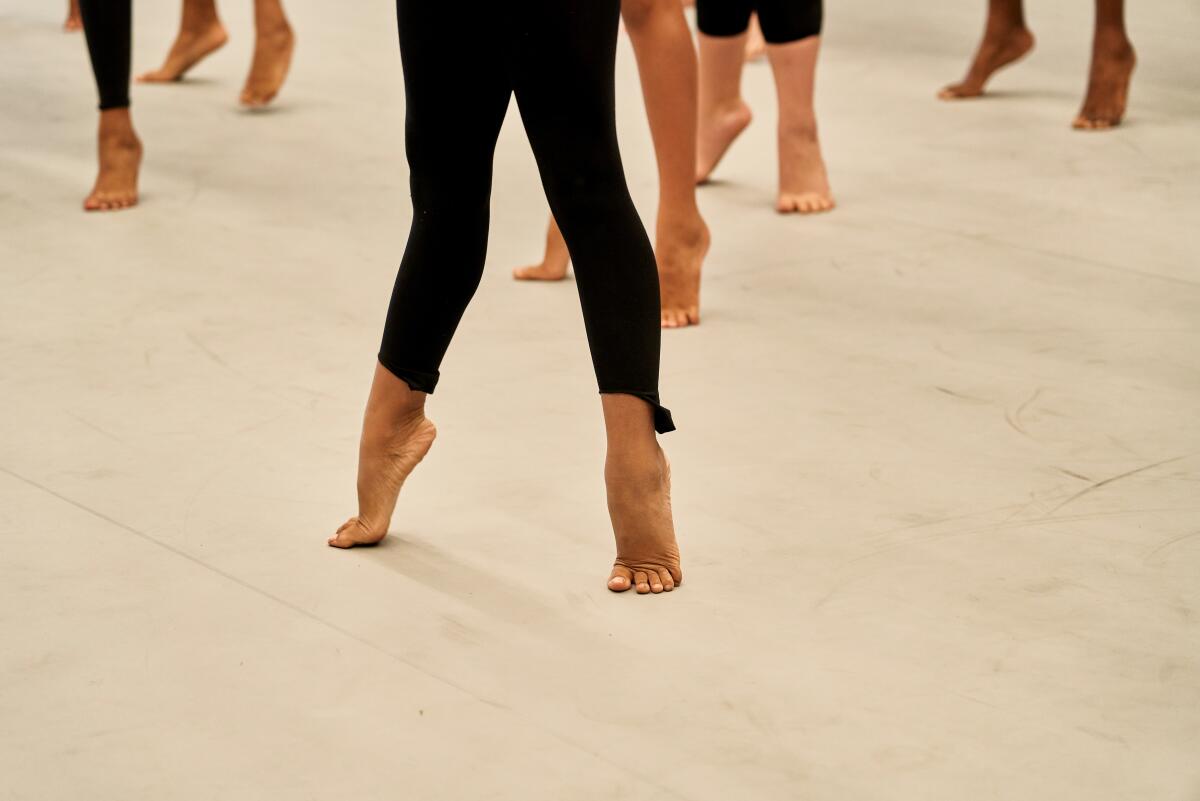
Design time
Gov. Gavin Newsom asked the state to cut water usage by 15%. California responded by increasing water usage by 19% in March. I have a look at how the graphic campaigns to help conserve water could use a lot more emotion and perhaps a little bit of terror. Also, maybe we could use a drought mascot drawn from the Pokémon universe? Just saying.
Essential happenings
A production of Thornton Wilder’s “Our Town.” The West Coast premiere of “I Can’t Breathe, “ an opera inspired by the stories of Black Americans’ deadly encounters with police. And the world premiere of Pulitzer Prize-winning composer Ellen Reid’s “Floodplain,” courtesy of the Los Angeles Chamber Orchestra. Matt Cooper rounds up the six best bets in culture in L.A. this weekend.
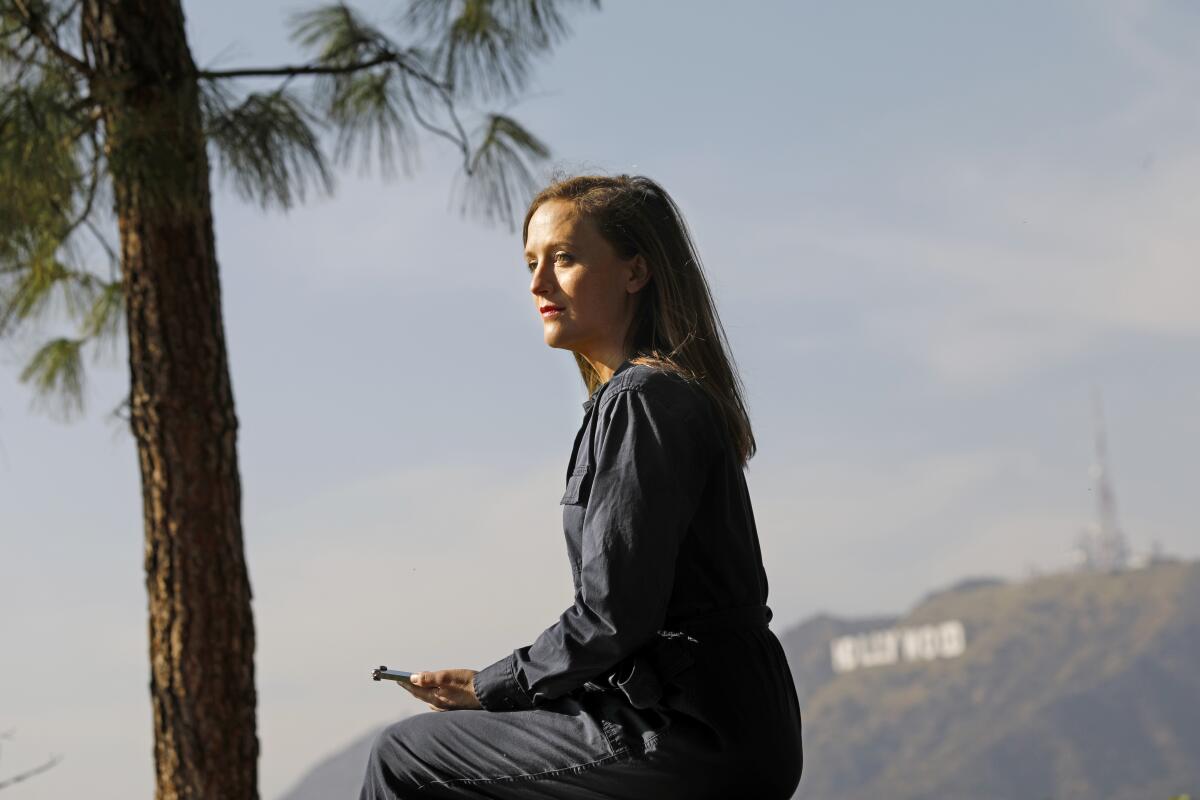
Moves
The Hammer Museum will honor artist Charles Gaines and activist Chase Strangio at its 2022 gala.
Many congrats to my colleague Marcus Yam for winning (earning!) the Pulitzer Prize in photography. And to my many colleagues in Entertainment for being named finalists in the breaking news category for their gripping coverage of the “Rust” tragedy.
Passages
Suzi Gablik, an art critic who published books on René Magritte, Pop Art and the failures of modernism, is dead at 87.
In other news
— If you listen to only one podcast this week, make it this episode of the Hyperallergic podcast, which features a lengthy interview with Tamara Lanier about her quest to claim images of an enslaved ancestor from the archives of Harvard’s Peabody Museum.
— Need a backgrounder on Lanier’s case? Read this report published by Valentina Di Liscia last fall on the story. It all goes back to a scientist who took the daguerrotypes — of an enslaved laborer known as Papa Renty and his daughter Delia — to support racist scientific theories.
— There are countless ideas for solving homelessness. The podcast “We the Unhoused” actually asks the unhoused what they think.
— Ace Gallery founder Douglas Chrismas has been ordered by the U.S. Central District Court of California to repay $14.2 million in profits from art sales that he diverted into personal accounts.
— Andy Warhol’s “Shot Sage Blue Marilyn” set auction records on Monday, going for $195 million.
— So Louis Kahn’s Salk Institute remains closed to the public for architectural tours, but Louis Vuitton held a fashion show there? Pays to be the 1%.
— Dallas Morning News architecture critic Mark Lamster has a look at a Morphosis design proposal for a cultural hub at the University of Texas at Dallas ... and is not impressed.
And last but not least ...
I am here for improvised musical instruments.
The biggest entertainment stories
Get our big stories about Hollywood, film, television, music, arts, culture and more right in your inbox as soon as they publish.
You may occasionally receive promotional content from the Los Angeles Times.




